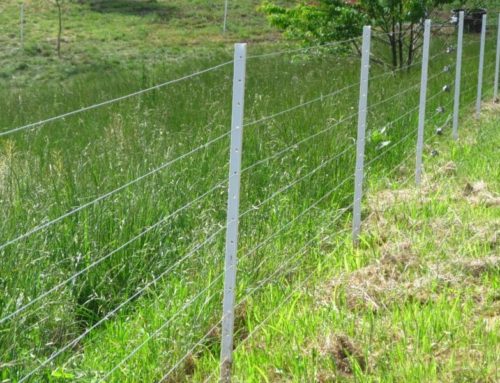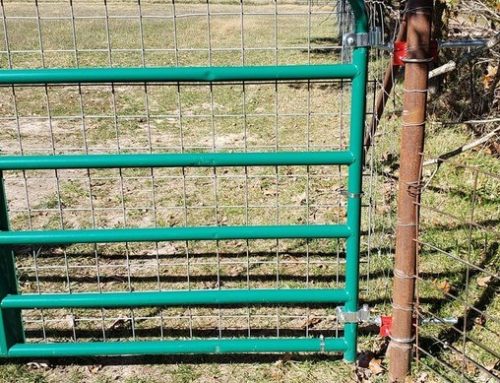Easy to install and shockingly versatile, a solar electric fence will give you the power to keep your animals in the pasture, even if you’re off the grid.
Electric fencing can be installed with basic hand tools and no prior fencing experience. And by adding a solar-powered fence energizer, you’ll make installation even simpler by eliminating the need for any grid connection. Not only that but using a fence energizer powered by a solar-charged battery will also offer greater flexibility in placement on your property, allowing you to put the unit where needed without any consideration for a grid connection. You won’t have to worry about wayward animals if the utility grid goes down. You can even easily add it to, and use it in conjunction with, existing wood or metal fencing. All in all, solar-powered fencing may provide an attractive solution when compared with trying to install a fence energizer that runs on 120-volt alternating current (AC), especially for remote or very large fencing systems that suffer from a lack of utility outlets near the fence line
The Basics
Before getting too much into the advantages of solar over conventional grid electricity, let’s review some electric fencing basics. The fencing type you choose, its height, strength, materials, and wire spacing will all depend entirely on what you’re trying to keep in or out.
A properly installed electric fence won’t cause serious harm to animals (or people!) that happen to come in contact with the energized wires. While most electric fencing consists of only a few bare wires strung between some lightweight insulators, it’s an animal’s learned fear of the fence — not the strength of the wire — that keeps the animal contained. Most animals that make initial contact with an electric fence will immediately back up. However, if the energized wires are spaced too far apart, an animal may be able to extend its head through to the other side before touching an energized wire. Feeling the sting further back on its neck, the startled animal may bolt straight through instead of backing up, no doubt dragging your new fence behind it! For this reason, you must use the correct wire spacing and fence design for the animals you’re trying to contain.
Some electric fencing systems use wires that are woven into a brightly colored flat tape or rope. This type of electric fencing material makes it easier for animals to recognize what happens when they get too near and thus remember to steer clear. Larger animals, such as horses and cattle, maybe more manageable when using wider electric fencing tape because it’s easier for them to see than bare wire.
One of the newest forms of electric fencing is electrified netting. Woven into this non-metallic netting are tiny electrically interconnected metal strands. This fencing material works to contain smaller animals — goats, chickens, turkeys, rabbits, and even cats and dogs — better than wider-spaced electric fence wire.
Read more: https://www.motherearthnews.com/homesteading-and-livestock/solar-powered-electric-fence-zm0z17aszmul




